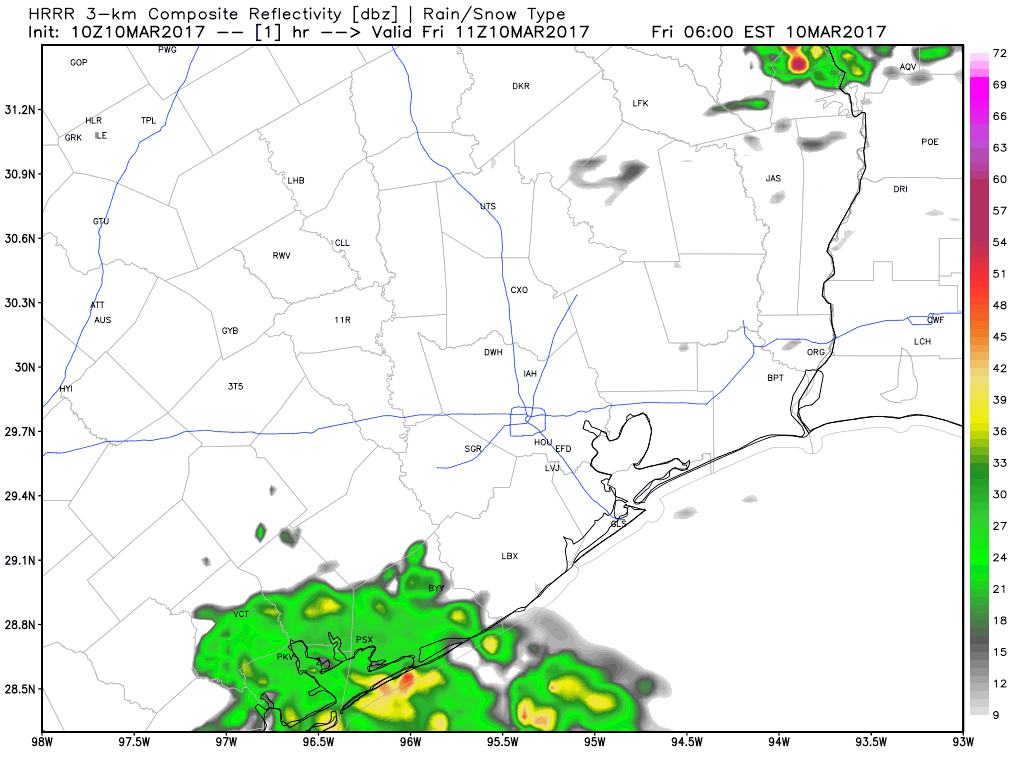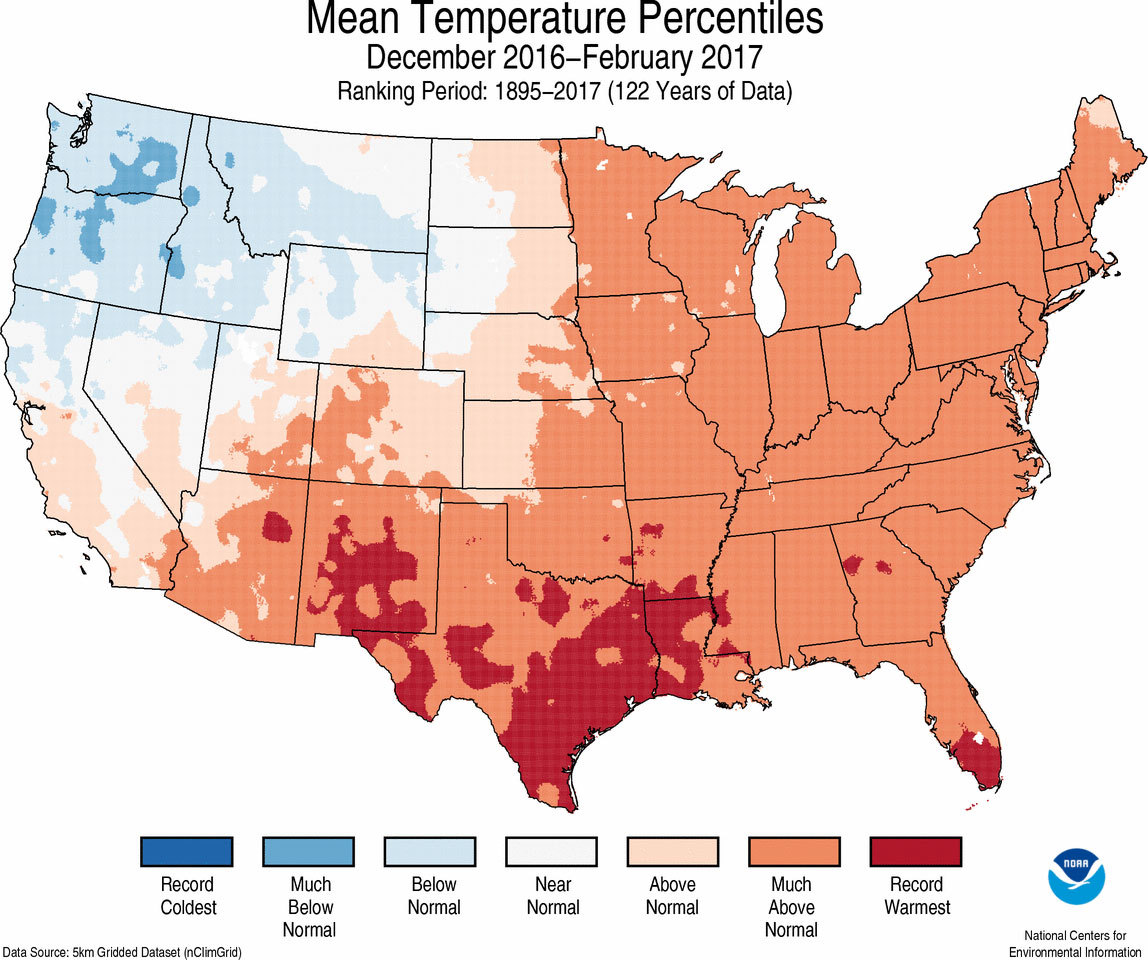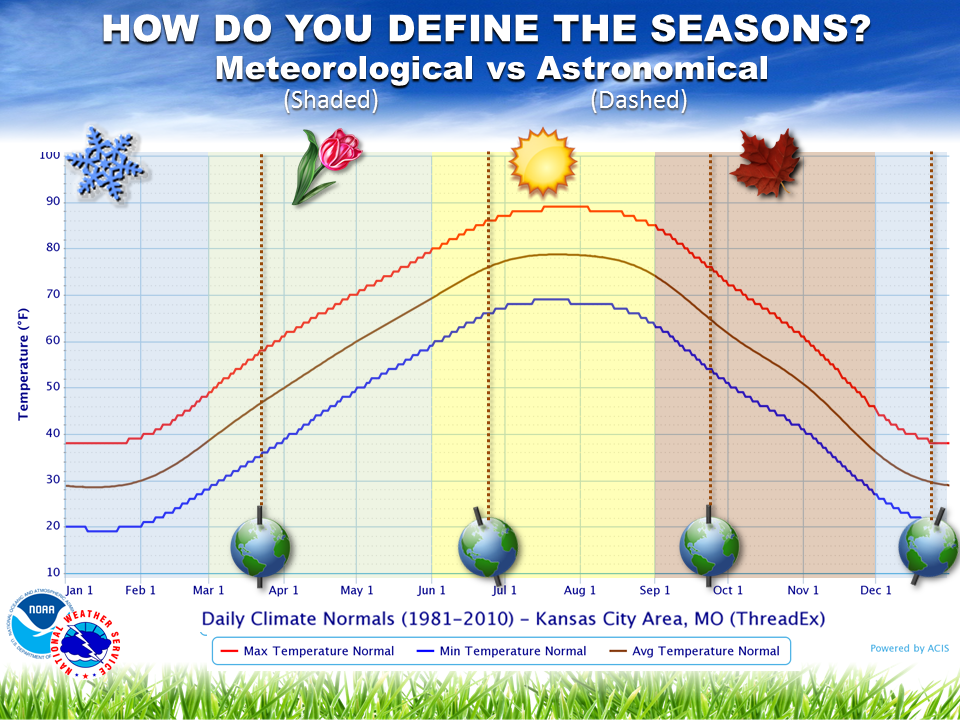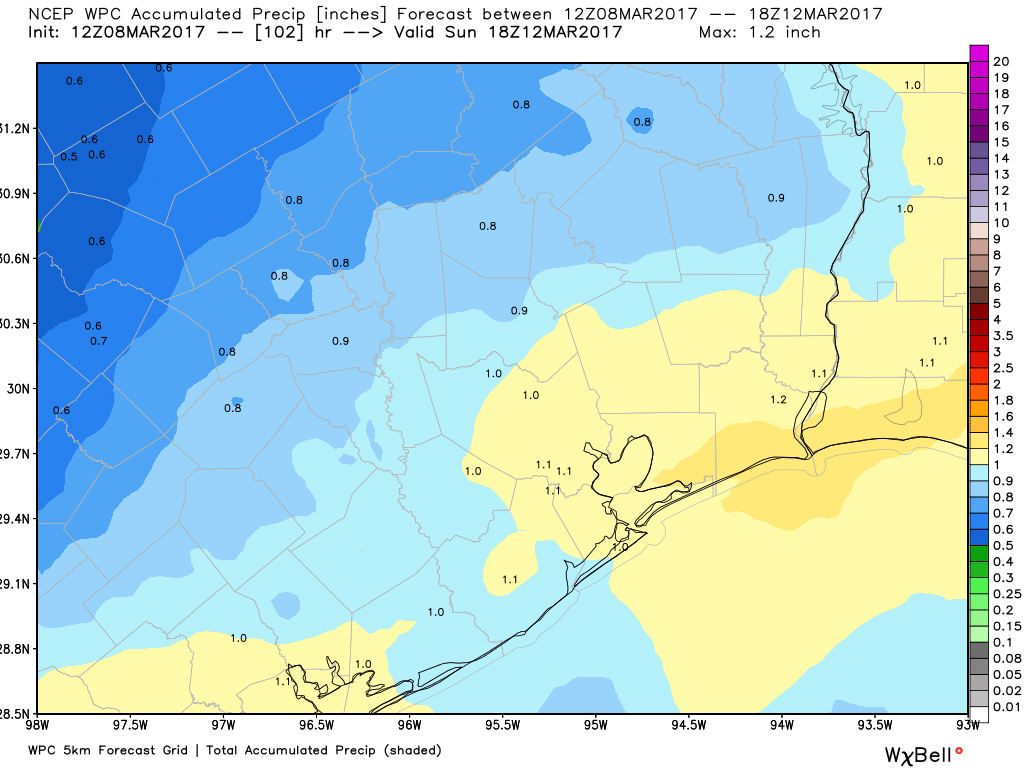After a few showers yesterday, we should see a few more around today. An unsettled weather pattern is going to remain in control through Saturday night before some more pleasant weather next week. The details…
Today Through Sunday
Today will be a bit of a tricky one. There’s going to be a chance of showers anywhere at almost any time today, but exactly how widespread the showers are and where they are will have to be something tackled as the day goes on. A “backdoor” cold front (coming from the northeast) will collide with ample Gulf moisture, some instability, and some upper level energy. The combination will lead to scattered showers and a chance of thunderstorms. The best chances will probably be both northeast and southwest of Houston.

But as you can see, everyone will be at risk for a shower or storm today, so I recommend an umbrella. Severe weather on a widespread scale is unlikely, but there could be a strong storm northeast of the city this afternoon.
Temperatures will be mild, with highs in mid to upper 70s. If you have Friday night plans, the same umbrella advice applies. We should see most activity diminish, but new showers will likely develop in spots. We could also see some steadier rain develop south of Houston toward Saturday morning.
(Space City Weather is sponsored by an anonymous donor this month.)



